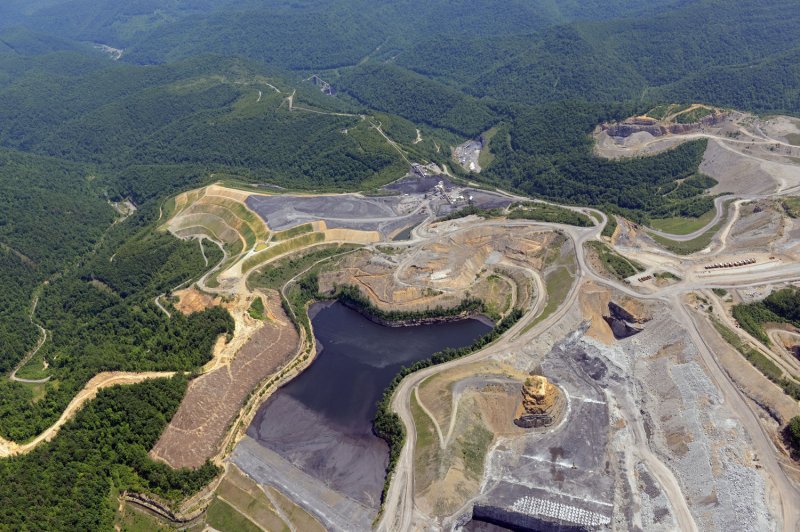Coal operations often include a pond where toxic sludge, a combination of coal ash and other coal production byproducts, is stored. File photo by UPI/Debbie Hill |
License Photo
DURHAM, N.C., Sept. 2 (UPI) -- High concentrations of radioactive contaminants have been found in coal ash produced in North America's three largest coal-producing regions -- the Illinois, Appalachian and Powder River basins.
Until now, environmental protections have focused on a variety of other contaminants commonly found in coal ash and other forms of coal pollution. But a recent study by researchers at Duke University show that radioactivity levels are worryingly high.
"Until now, metals and contaminants such as selenium and arsenic have been the major known contaminants of concern in coal ash," Avner Vengosh, professor of geochemistry and water quality at Duke's Nicholas School of the Environment, explained in a press release. "This study raises the possibility we should also be looking for radioactive elements, such as radium isotopes and lead-210, and including them in our monitoring efforts."
The radioactivity of radium isotopes and lead-210 are heightened by the combustion process in coal production. For this reason, coal ash samples registered radioactive levels 10 times greater than the parent coal.
"Radioactive radium and lead-210 ends up concentrated in these tiny particles of fly ash, which though individually small, collectively comprise the largest volume of coal ash waste going into holding ponds and landfills," said researcher Nancy Lauer.
Lauer is a Ph.D. student working in Vengosh's lab and lead author of the new study on coal ash radioactivity, published this week in the journal Environmental Science & Technology.
Coal ash is currently unregulated. It's stored in holding ponds and tanks at landfills and coal plants around the country. Because it's unregulated, scientists know little about how much may be making it into the surrounding environment.
A number of holding tanks have collapsed over the years -- most notably in Tennessee -- spilling coal ash into area waterways. Dry coal ash can potentially escape into the air.
"Because of the tiny size of the fly ash particles, they are much more likely to be suspended in air if they are disposed in a dry form," Lauer said. "People breathing this air may face increased risks, particularly since tiny particles tend to be more enriched in radioactivity."
In addition to drawing attention to a potential hidden source of radioactive pollution, researchers say their research paves the way for improved coal ash monitoring. Their work showed that radioactive levels of regional coal ash can be measured simply by testing levels of radioactive elements in the parent coal.
"This analysis can be applied to all coal ash worldwide, and is useful information for regulators, industries and scientists alike," Vengosh said.















